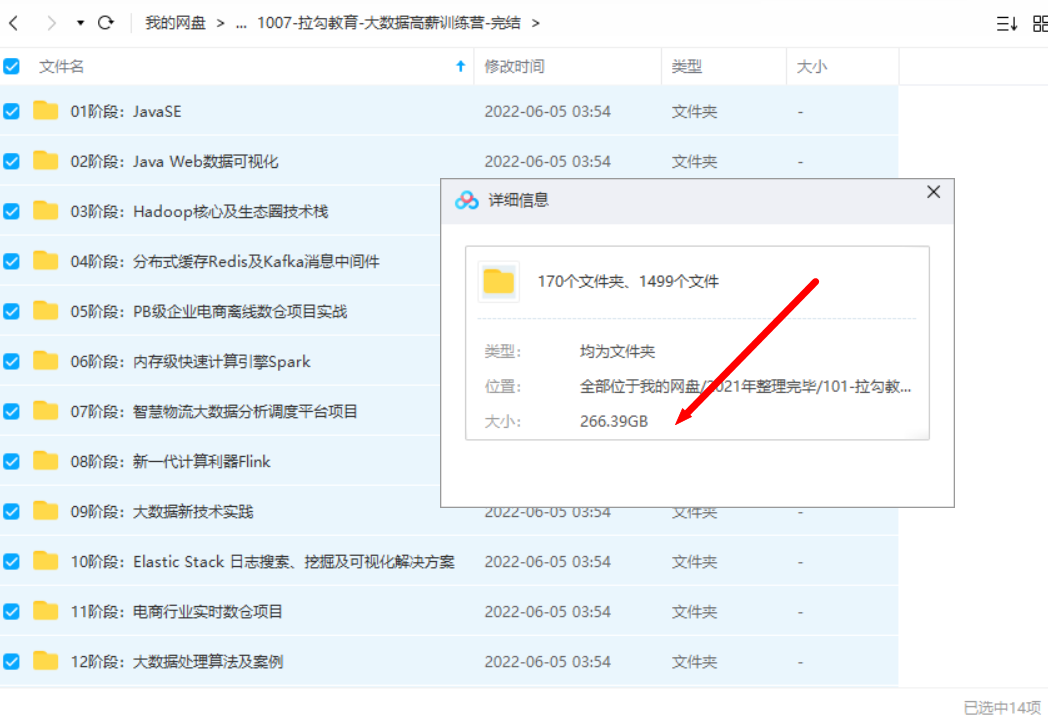标签:分桶 default 分区 partition hive dept 分区表 Hive day
第7章 分区表和分桶表(优化)
7.1 分区表
分区表实际上就是对应一个HDFS文件系统上的独立的文件夹,该文件夹下是该分区所有的数据文件。Hive中的分区就是分目录,把一个大的数据集根据业务需要分割成小的数据集。在查询时通过WHERE子句中的表达式选择查询所需要的指定的分区,这样的查询效率会提高很多。
7.1.1 分区表基本操作
1)引入分区表(需要根据日期对日志进行管理, 通过部门信息模拟)
dept_20200401.log
dept_20200402.log
dept_20200403.log
……
2)创建分区表语法
hive (default)> create table dept_partition(
deptno int, dname string, loc string
)
partitioned by (day string)
row format delimited fields terminated by '\t';
注意:分区字段不能是表中已经存在的数据,可以将分区字段看作表的伪列。
3)加载数据到分区表中
(1) 数据准备
dept_20220401.log
10 ACCOUNTING 1700
20 RESEARCH 1800
dept_20220402.log
30 SALES 1900
40 OPERATIONS 1700
dept_20220403.log
50 TEST 2000
60 DEV 1900
(2) 加载数据
hive (default)> load data local inpath '/opt/module/hive/datas/dept_20200401.log' into table dept_partition partition(day='20220401');
hive (default)> load data local inpath '/opt/module/hive/datas/dept_20200402.log' into table dept_partition partition(day='20220402');
hive (default)> load data local inpath '/opt/module/hive/datas/dept_20200403.log' into table dept_partition partition(day='20220403');
注意:分区表加载数据时,必须指定分区
4)查询分区表中数据
单分区查询
hive (default)> select * from dept_partition where day='20220401';
多分区联合查询
hive (default)> select * from dept_partition where day='20220401'
union
select * from dept_partition where day='20220402'
union
select * from dept_partition where day='20220403';
hive (default)> select * from dept_partition where day='20220401' or
day='20200402' or day='20200403' ;
5)增加分区
创建单个分区
hive (default)> alter table dept_partition add partition(day='20200404') ;
同时创建多个分区
hive (default)> alter table dept_partition add partition(day='20200405') partition(day='20200406');
6)删除分区
删除单个分区
hive (default)> alter table dept_partition drop partition (day='20200406');
同时删除多个分区
hive (default)> alter table dept_partition drop partition (day='20200404'), partition(day='20200405');
7)查看分区表有多少分区
hive> show partitions dept_partition;
8)查看分区表结构
hive> desc formatted dept_partition;
7.1.2 二级分区
思考: 如何一天的日志数据量也很大,如何再将数据拆分?
1)创建二级分区表
hive (default)> create table dept_partition2(
deptno int, dname string, loc string
)
partitioned by (day string, hour string)
row format delimited fields terminated by '\t';
2)正常的加载数据
(1)加载数据到二级分区表中
hive (default)> load data local inpath '/opt/module/hive/datas/dept_20220401.log' into table
dept_partition2 partition(day='20220401', hour='12');
(2)查询分区数据
hive (default)> select * from dept_partition2 where day='20220401' and hour='12';
3)把数据直接上传到分区目录上,让分区表和数据产生关联的三种方式
(1)方式一:上传数据后修复
上传数据
hive (default)> dfs -mkdir -p
/user/hive/warehouse/mydb.db/dept_partition2/day=20220401/hour=13;
hive (default)> dfs -put /opt/module/datas/dept_20220401.log /user/hive/warehouse/mydb.db/dept_partition2/day=20220401/hour=13;
查询数据(查询不到刚上传的数据)
hive (default)> select * from dept_partition2 where day='20220401' and hour='13';
执行修复命令
hive> msck repair table dept_partition2;
再次查询数据
hive (default)> select * from dept_partition2 where day='20220401' and hour='13';
(2)方式二:上传数据后添加分区
上传数据
hive (default)> dfs -mkdir -p
/user/hive/warehouse/mydb.db/dept_partition2/day=20220401/hour=14;
hive (default)> dfs -put /opt/module/hive/datas/dept_20220401.log /user/hive/warehouse/mydb.db/dept_partition2/day=20220401/hour=14;
执行添加分区
hive (default)> alter table dept_partition2 add partition(day='202209',hour='14');
查询数据
hive (default)> select * from dept_partition2 where day='20220401' and hour='14';
(3)方式三:创建文件夹后load数据到分区
创建目录
hive (default)> dfs -mkdir -p
/user/hive/warehouse/mydb.db/dept_partition2/day=20220401/hour=15;
上传数据
hive (default)> load data local inpath '/opt/module/hive/datas/dept_20220401.log' into table
dept_partition2 partition(day='20220401',hour='15');
查询数据
hive (default)> select * from dept_partition2 where day='20220401' and hour='15';
7.1.3 动态分区
关系型数据库中,对分区表Insert数据时候,数据库自动会根据分区字段的值,将数据插入到相应的分区中,Hive中也提供了类似的机制,即动态分区(Dynamic Partition),只不过,使用Hive的动态分区,需要进行相应的配置。
1)开启动态分区参数设置
(1)开启动态分区功能(默认true,开启)
hive.exec.dynamic.partition=true
(2)设置为非严格模式(动态分区的模式,默认strict,表示必须指定至少一个分区为静态分区,nonstrict模式表示允许所有的分区字段都可以使用动态分区。)
hive.exec.dynamic.partition.mode=nonstrict
(3)在所有执行MR的节点上,最大一共可以创建多少个动态分区。默认1000
hive.exec.max.dynamic.partitions=1000
(4)在每个执行MR的节点上,最大可以创建多少个动态分区。该参数需要根据实际的数据来设定。比如:源数据中包含了一年的数据,即day字段有365个值,那么该参数就需要设置成大于365,如果使用默认值100,则会报错。
hive.exec.max.dynamic.partitions.pernode=100
(5)整个MR Job中,最大可以创建多少个HDFS文件。默认100000
hive.exec.max.created.files=100000
(6)当有空分区生成时,是否抛出异常。一般不需要设置。默认false
hive.error.on.empty.partition=false
2)案例实操
需求:将dept表中的数据按照地区(loc字段),插入到目标表dept_partition的相应分区中。
(1)创建目标分区表
hive (default)> create table dept_partition_dy(id int, name string) partitioned by (loc int) row format delimited fields terminated by '\t';
(2)设置动态分区
hive (default)> set hive.exec.dynamic.partition.mode = nonstrict;
hive (default)> insert into table dept_partition_dy partition(loc) select deptno, dname, loc from dept;
(3)查看目标分区表的分区情况
hive (default)> show partitions dept_partition;
思考:目标分区表是如何匹配到分区字段的?
7.2 分桶表
分区提供一个隔离数据和优化查询的便利方式。不过,并非所有的数据集都可形成合理的分区。对于一张表或者分区,Hive 可以进一步组织成桶,也就是更为细粒度的数据范围划分。
分桶是将数据集分解成更容易管理的若干部分的另一个技术。
分区针对的是数据的存储路径;分桶针对的是数据文件。
1)先创建分桶表
(1)数据准备
1001 ss1
1002 ss2
1003 ss3
1004 ss4
1005 ss5
1006 ss6
1007 ss7
1008 ss8
1009 ss9
1010 ss10
1011 ss11
1012 ss12
1013 ss13
1014 ss14
1015 ss15
1016 ss16
(2)创建分桶表
create table stu_bucket(id int, name string)
clustered by(id)
into 4 buckets
row format delimited fields terminated by '\t';
(3)查看表结构
hive (default)> desc formatted stu_bucket;
Num Buckets: 4
(4)导入数据到分桶表中,load的方式
hive (default)> load data local inpath '/opt/module/hive/datas/stu_bucket.txt' into table stu_bucket;
(5)查看创建的分桶表中是否分成4个桶
(6)查询分桶的数据
hive(default)> select * from stu_bucket;
(7)分桶规则:
根据结果可知:Hive的分桶采用对分桶字段的值进行哈希,然后除以桶的个数求余的方 式决定该条记录存放在哪个桶当中
2)分桶表操作需要注意的事项:
- reduce的个数设置为-1,让Job自行决定需要用多少个reduce或者将reduce的个数设置为大于等于分桶表的桶数
- 从hdfs中load数据到分桶表中,避免本地文件找不到问题
- 不要使用本地模式
3)insert方式将数据导入分桶表
hive(default)>insert into table stu_buck select * from student_insert ;
7.3 抽样查询
对于非常大的数据集,有时用户需要使用的是一个具有代表性的查询结果而不是全部结果。Hive可以通过对表进行抽样来满足这个需求。
语法: TABLESAMPLE(BUCKET x OUT OF y)
查询表stu_buck中的数据。
hive (default)> select * from stu_buck tablesample(bucket 1 out of 4 on id);
注意:x的值必须小于等于y的值,否则
FAILED: SemanticException [Error 10061]: Numerator should not be bigger than denominator in sample clause for table stu_buck
IT学习网站
大数据高薪训练营 完结

链接:https://pan.baidu.com/s/1ssRD-BYOiiMw30EV_BLMWQ
提取码:dghu
失效加V:x923713
QQ交流群 欢迎加入

标签:分桶,default,分区,partition,hive,dept,分区表,Hive,day 来源: https://www.cnblogs.com/niuniu2022/p/16354075.html
本站声明: 1. iCode9 技术分享网(下文简称本站)提供的所有内容,仅供技术学习、探讨和分享; 2. 关于本站的所有留言、评论、转载及引用,纯属内容发起人的个人观点,与本站观点和立场无关; 3. 关于本站的所有言论和文字,纯属内容发起人的个人观点,与本站观点和立场无关; 4. 本站文章均是网友提供,不完全保证技术分享内容的完整性、准确性、时效性、风险性和版权归属;如您发现该文章侵犯了您的权益,可联系我们第一时间进行删除; 5. 本站为非盈利性的个人网站,所有内容不会用来进行牟利,也不会利用任何形式的广告来间接获益,纯粹是为了广大技术爱好者提供技术内容和技术思想的分享性交流网站。
